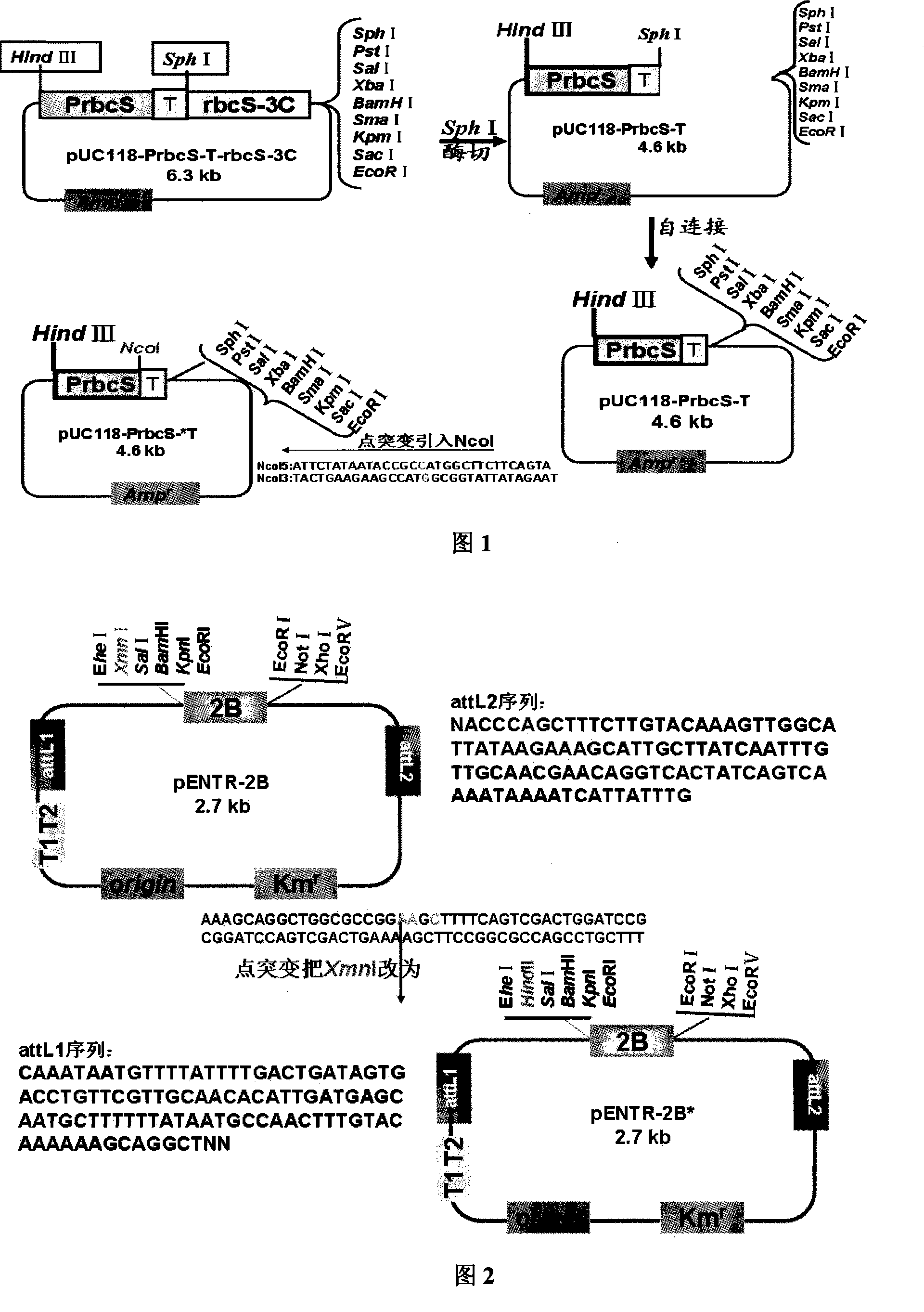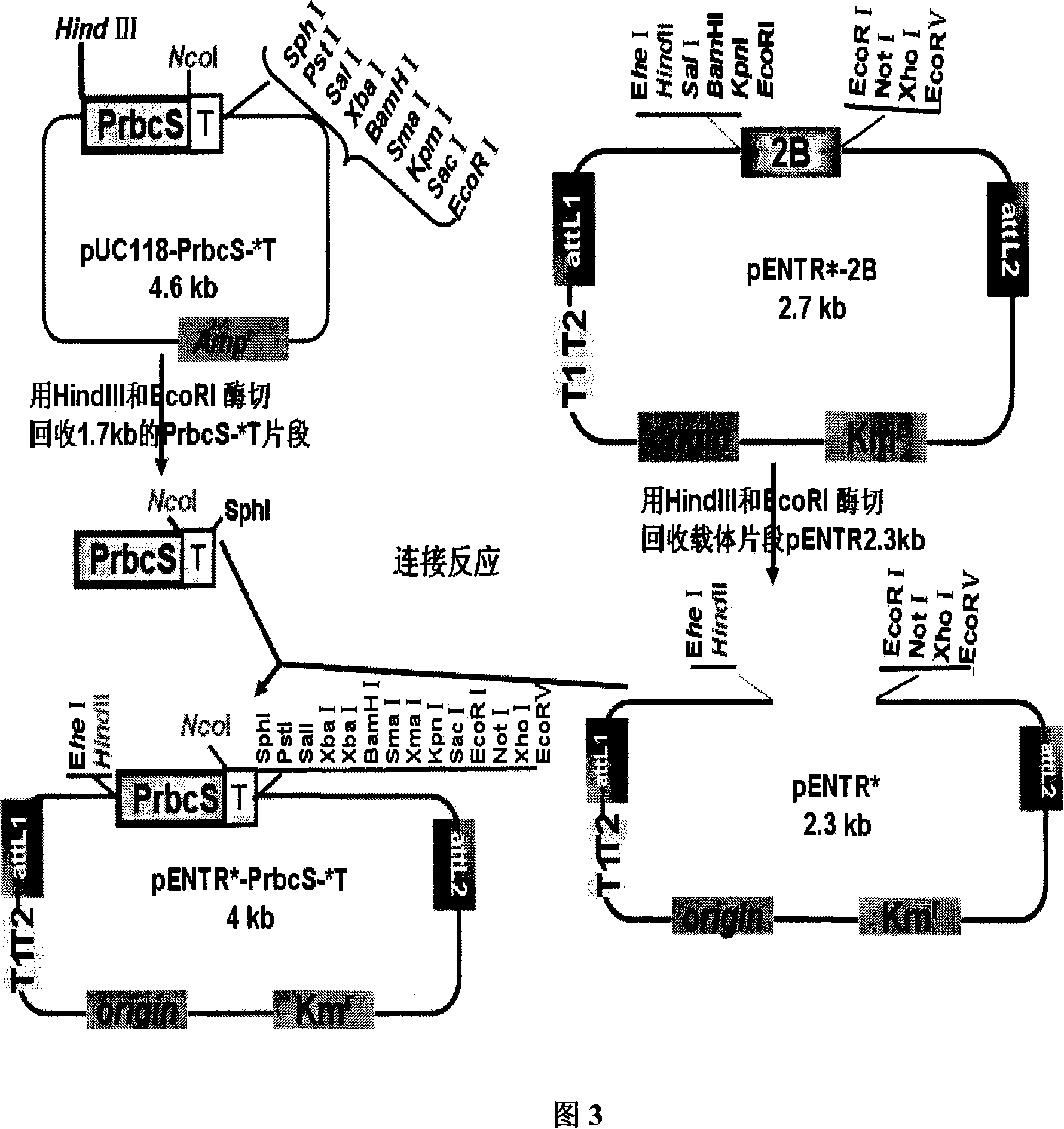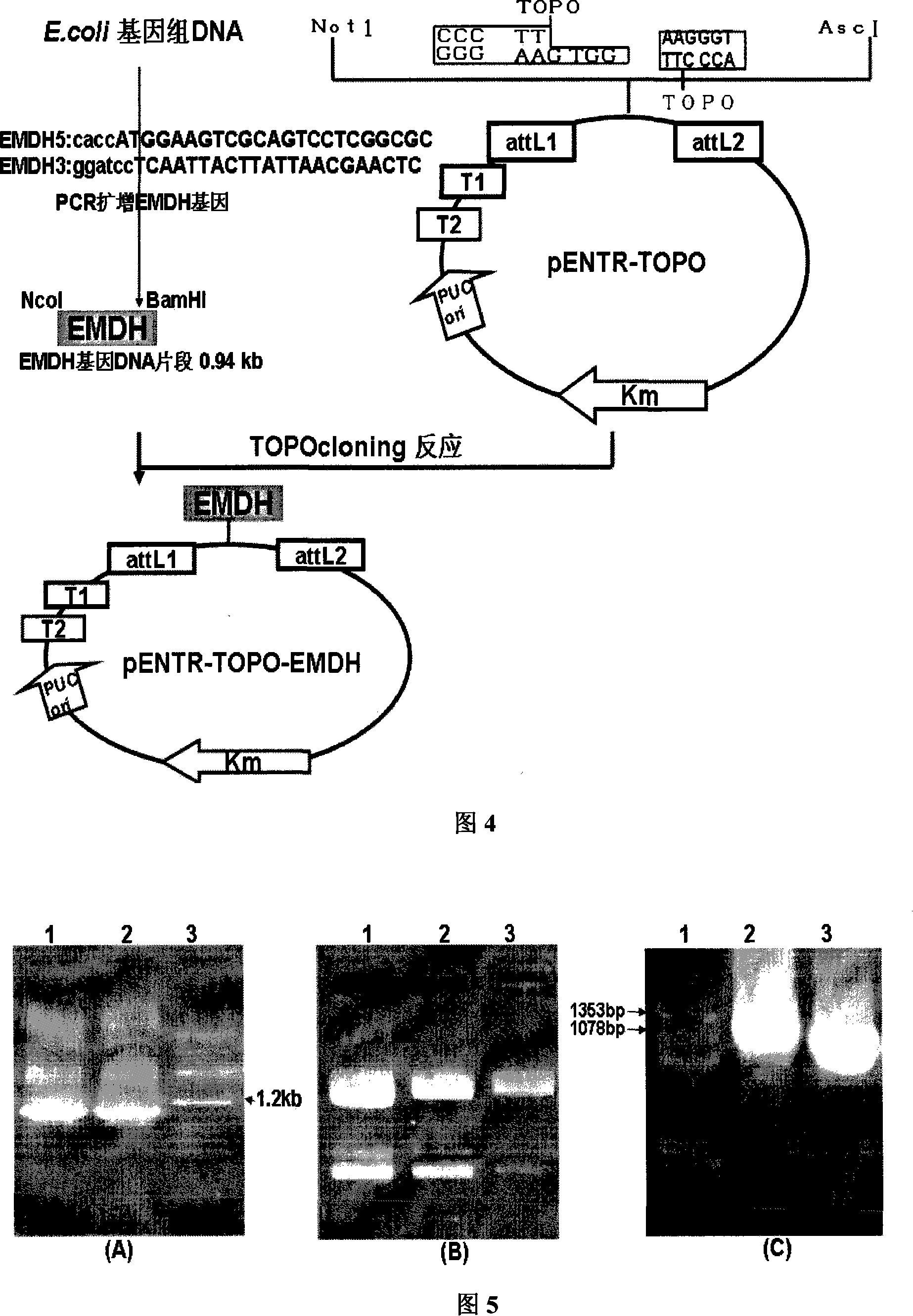Plant expression vector for improving aluminum-tolerance of plant
A plant expression vector and carrier technology, applied in the field of plant genetic engineering, can solve the problems of no tissue specificity, etc., and achieve the effects of improving resistance, improving aluminum toxicity tolerance, and good root growth
- Summary
- Abstract
- Description
- Claims
- Application Information
AI Technical Summary
Problems solved by technology
Method used
Image
Examples
Embodiment 1
[0067] Embodiment 1, construction of intermediate vector pUC118-PrbcS-T
[0068] Purify (operate according to the kit instructions) pUC118-PrbcS-T-rbcS-3C (constructed and provided by Sugita et al., Sugita et al.1987, MGG, 209: 247-256) with a plasmid extraction kit (Broadtech Corporation) , the rbcS-3C in pUC118-PrbcS-T-rbcS-3C was cut out with restriction endonuclease SphI (Fermentas), and the cut vectors pUC118-PrbcS-T and rbcS-3C were separated by agarose gel electrophoresis Fragment, recover the 4.6kb vector pUC118-PrbcS-T, and then use the ligase kit of TaKaRa to ligate (operate according to the kit instructions) the vector DNA fragment without rbcS-3C to generate an intermediate vector pUC118-PrbcS -T (Figure 1), conversion of high efficiency (10 8 ) Escherichia coli competent cells (DH5α, purchased from Tiangen Biochemical Technology Co., Ltd.), spread the transformed Escherichia coli on a plate added with ampicillin (Amp, 100 μg / ml), cultivate overnight at 37°C, and ...
Embodiment 2
[0069] Example 2, using point mutation technology to introduce NcoI site in the intermediate vector pUC118-PrbcS-T
[0070] Using the purified plasmid pUC118-Prbcs-T as a template, a pair of complementary primers (NcoI5 and NcoI3, Figure 1) for point mutations were designed according to the chloroplast localization sequence, and TaKaRa was commissioned to synthesize them. Add 25ng of purified plasmid pUC118-PrbcS-T to the point mutation reaction mixture as a template, and at the same time add 125ng of point mutation primers NcoI5 and NcoI3, 1μl dNTP (2.5mM), 5μl of 10×KOD reaction buffer and 1μl of KOD polymerization Enzyme (Toyobo Japan), add double distilled water to make the final reaction volume 50 μl. Heated at 95°C for 30 seconds on a PCR instrument, followed by 15 cycles of reaction at 95°C for 30 seconds, 55°C for 1 minute, 68°C for 10 minutes, and finally extended the reaction at 68°C for 10 minutes to synthesize The child chain of the mutation site. After the react...
Embodiment 3
[0071] Example 3. Using point mutation technology to change XmnI in Gateway's entry vector pENTR-2B multiple cloning site to HindIII
[0072] Using the purified plasmid pENTR-2B (purchased from Invitrogen) as a template, a pair of complementary primers (HindIII5 and HindIII3) for point mutation were designed according to the sequence near XmnI (Figure 2), and commissioned to Shanghai Shenneng Bocai Company to synthesize. Add 25ng of purified plasmid pENTR-2B as a template to the point mutation reaction mixture, and add 125ng of point mutation primers HindIII5 and HindIII3, 1μldNTP (2.5mM), 5μl of 10×KOD reaction buffer and 1ul of KOD polymerase (Japan Toyobo), add double distilled water to make the final volume of the reaction 50 μl. Heated at 95°C for 30 seconds on a PCR instrument, followed by 15 cycles of reaction at 95°C for 30 seconds, 55°C for 1 minute, 68°C for 10 minutes, and finally extended the reaction at 68°C for 10 minutes to synthesize The child chain of the mut...
PUM
 Login to View More
Login to View More Abstract
Description
Claims
Application Information
 Login to View More
Login to View More - R&D
- Intellectual Property
- Life Sciences
- Materials
- Tech Scout
- Unparalleled Data Quality
- Higher Quality Content
- 60% Fewer Hallucinations
Browse by: Latest US Patents, China's latest patents, Technical Efficacy Thesaurus, Application Domain, Technology Topic, Popular Technical Reports.
© 2025 PatSnap. All rights reserved.Legal|Privacy policy|Modern Slavery Act Transparency Statement|Sitemap|About US| Contact US: help@patsnap.com



